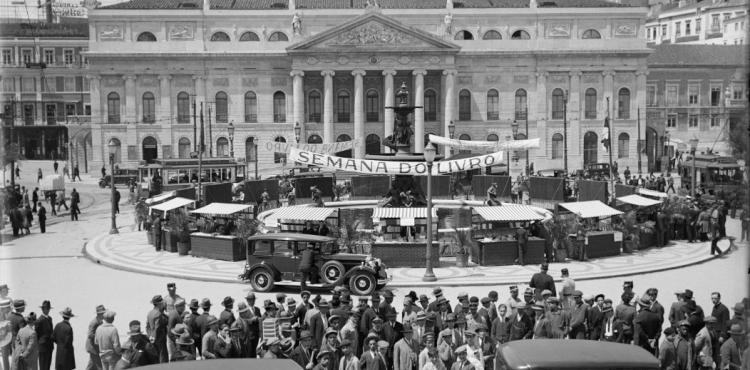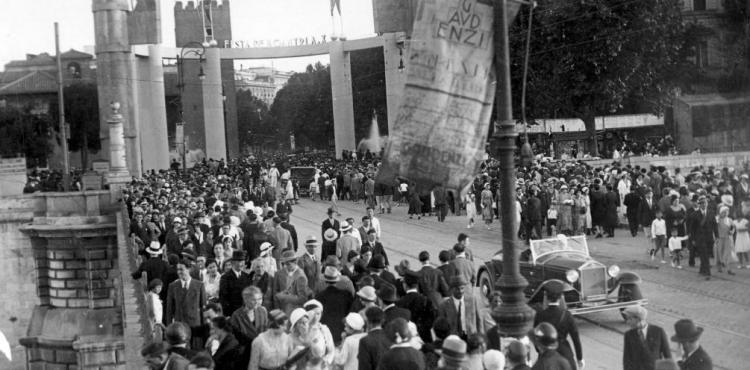Europa inter urbes, connectar ciutats
[English version below]
Un dels propòsits de l’exposició Barcelona Flashback és presentar i explorar la història de la nostra ciutat no només des del passat propi, sinó també des de la comparació, fent-lo dialogar amb la trajectòria històrica de les altres urbs del continent europeu amb què ha protagonitzat i ha trenat una història amb molts aspectes en comú. Amb aquest propòsit s’ha portat a terme el projecte digital Europa inter urbes, en el qual s’ha treballat en col·laboració amb l’empresa Wasabi Produccions i amb museus de ciutat europeus que formen part de la xarxa informal City History Museums and Research Network of Europe, liderada pel MUHBA, i que s’ha materialitzat en la producció d’un programa experimental i interactiu que convida el visitant a consultar de manera activa aquestes històries. De moment –perquè el projecte es troba ara mateix en una fase d’ampliació– se centra en cinc ciutats (Barcelona, Lisboa, Londres, Frankfurt i Roma) i en els dos darrers segles d’història.
A Europa inter urbes el passat de Barcelona s’aborda des d’una pluralitat de temes i es llegeix en relació amb el recorregut històric d’altres de les principals ciutats del continent. A més, es dibuixa un escorç de la història urbana europea que contribueix a posar en relleu molts dels problemes, dinàmiques i reptes comuns. I, per descomptat, també posa de manifest les diferències respectives. En aquest sentit, el programa resulta una eina útil a l’hora de comprendre de quina manera les diferents ciutats van haver de respondre als desafiaments compartits, com per exemple als associats a la ràpida expansió urbana en uns temps d’industrialització creixent, a la contínua transformació tecnològica dels últims dos segles o, també, als nombrosos conflictes socials, polítics i laborals que se’n derivaven.
Ara bé, Europa inter urbes també tracta i compara altres temàtiques, que van des de la planificació urbanística i la gestió o creació de les infraestructures metropolitanes fins a l’evolució de les institucions d’autogovern municipal o les metamorfosis en els camps de l’oci, de la cultura i de la memòria. Així doncs, la finalitat d’aquesta iniciativa és desenvolupar un projecte que promogui i porti a terme una relectura de la història europea que integra una pluralitat de temàtiques diverses i que, en aquest cas, es fa des de la perspectiva de les ciutats, tot aportant una mirada diferent a l’explicació històrica del continent europeu. Finalment, Europa inter urbes persegueix un objectiu addicional, un que enllaça amb la manera d’apropar els fets del passat a la ciutadania. El programa encara aquesta història comparativa i conjunta d’una forma visual i innovadora que posa texts i imatges en relació. Per aquesta raó, les narracions dels principals esdeveniments o processos de les ciutats s’acompanyen de fotografies de l’època que ajuden a il·lustrar-los, però també inclouen mapes o plànols que mostren com eren les ciutats en aquells moments i, al mateix temps, serveixen per ubicar el visitant en l’espai concret dels episodis ressaltats. D’aquesta manera, text, imatge i cartografia convergeixen i s’uneixen per tal de facilitar un accés alhora discursiu i visual, temporal i espacial, a la història urbana europea.
Edgar Straehle
MUHBA
English version
EUROPA INTER URBES, CONNECTING CITIES
One of the purposes of the Barcelona Flashback exhibition is to present and explore the history of our city not only from its own past, but also from a comparative perspective, making it enter into dialogue with the historical trajectory of the other cities on the European continent with which it has played a leading role and has woven a history with many aspects in common. With this aim in mind, the digital project Europa inter urbes has been carried out in collaboration with the company Wasabi Producciones and with European city museums that form part of the informal network City History Museums and Research Network of Europe, and which has materialised in the production of an experimental and interactive programme that invites the visitor to actively consult these stories. For the moment - because the project is currently in a phase of expansion - it focuses on five cities (Barcelona, Lisbon, London, Frankfurt and Rome) and on the last two centuries of history.
In Europa inter urbes, Barcelona's past is approached from a variety of perspectives and is read in relation to the historical journey of other major cities on the continent. In addition, it provides an outline of European urban history that helps to highlight many of the common problems, dynamics and challenges. And, of course, it also highlights the respective differences. In this sense, the programme is a useful tool in understanding how different cities had to respond to shared challenges, such as those associated with rapid urban expansion in times of increasing industrialisation, the continuous technological transformation of the last two centuries, or the many social, political and labour conflicts that resulted.
However, Europa inter urbes also deals with and compares other themes, ranging from urban planning and the management or creation of metropolitan infrastructures to the evolution of municipal self-government institutions or the metamorphoses in the fields of leisure, culture and memory. Thus, the aim of this initiative is to develop a project that promotes and carries out a re-reading of European history that integrates a plurality of diverse themes and that, in this case, is done from the perspective of cities, all contributing a different view of the historical explanation of the European continent. Finally, Europa inter urbes pursues an additional objective, one that is linked to the way in which the facts of the past are brought closer to the citizenry. The program still this comparative and joint history in a visual and innovative way that puts texts and images in relation. For this reason, the narratives of the main events or processes of the cities are accompanied by photographs of the time that help to illustrate them, but also include maps or plans that show what the cities were like at that time and, at the same time, serve to locate the visitor in the specific space of the episodes highlighted. In this way, text, image and cartography converge and come together to facilitate access to European urban history, both discursive and visual, in time and space.




